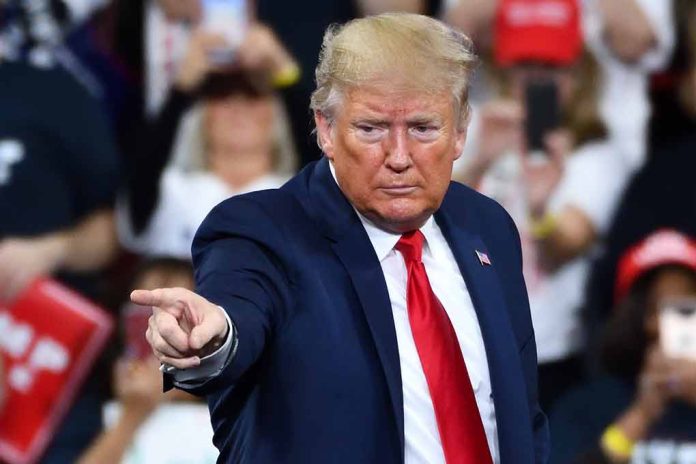
President Trump’s sweeping “Liberation Day” tariff plan targeting all trading nations marks a dramatic shift in American economic policy that could fundamentally reshape global commerce.
Key Takeaways
- Trump announced reciprocal tariffs will apply to all countries, not just the 10-15 nations initially considered
- The tariffs are scheduled to take effect on April 2, dubbed “Liberation Day” by Trump
- Tariffs have already been imposed on aluminum, steel, automobiles, and all goods from China
- The policy aims to match or counter tariffs that other countries impose on U.S. exports
- Trump views tariffs as both a protective measure for domestic businesses and a negotiating tool for better trade terms
Global Tariff Implementation
In a significant expansion of his trade agenda, President Donald Trump has announced that his administration’s reciprocal tariff policy will target all countries engaged in trade with the United States, not just a select group of nations. This sweeping approach represents a dramatic escalation from earlier indications that only 10 to 15 specific countries with significant trade imbalances would face new tariffs. The implementation is set for April 2, a date Trump has symbolically labeled “Liberation Day” to emphasize what he views as America breaking free from disadvantageous trade arrangements.
The comprehensive nature of this tariff strategy marks a departure from targeted approaches used in previous administrations. Trump has already implemented tariffs on aluminum, steel, automobiles, and all goods imported from China. This new phase expands that approach to encompass the entirety of America’s trading relationships, potentially affecting everything from consumer goods to industrial components across multiple economic sectors.
The divide in America is not political—it's a class divide separating the elites from the working class. Trump's economic agenda—a tight labor market and tariffs—raises the wages of working class Americans, which is why Wall Street, the Democrats, and their rich base hate it. pic.twitter.com/58NmuMUxnP
— Batya Ungar-Sargon (@bungarsargon) March 30, 2025
Reciprocal Tariff Strategy
The fundamental principle behind Trump’s tariff plan is reciprocity – matching or responding to the tariffs other nations place on American exports. Rather than accepting unequal trade terms, the administration intends to assess each country individually and implement counter-measures proportional to existing barriers. This approach seeks to create what Trump considers a more level playing field for American businesses that have been operating at a disadvantage in international markets.
In February, Trump signed a memorandum directing his administration to evaluate each nation’s specific trade practices and develop tailored counter-measures. The approach allows for flexibility, with Trump suggesting that in certain situations, the U.S. might implement tariffs at rates lower than those imposed by other countries. This indicates a potential negotiating strategy rather than a rigid, one-size-fits-all policy.
Economic Protection and Negotiation Tool
Beyond simply matching foreign tariffs, Trump views these measures as protective shields for American industries and as powerful leverage in trade negotiations. The administration believes that by demonstrating willingness to impose reciprocal tariffs broadly, trading partners will be motivated to reduce their own barriers to American exports. This approach transforms tariffs from purely economic instruments into diplomatic tools designed to secure better terms for U.S. businesses.
White House economics adviser Kevin Hassett had previously mentioned targeting only 10 to 15 countries with significant trade imbalances, but Trump’s latest announcement signals a more comprehensive strategy. This expanded scope suggests confidence in using broad tariff policies to address what the administration perceives as systemic unfairness in global trade, rather than focusing only on the most problematic relationships.









